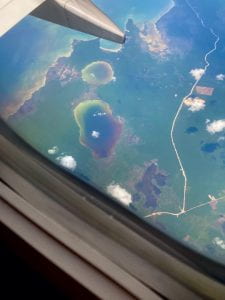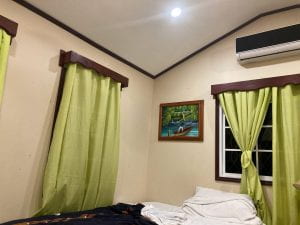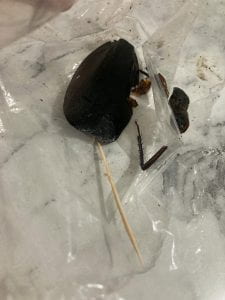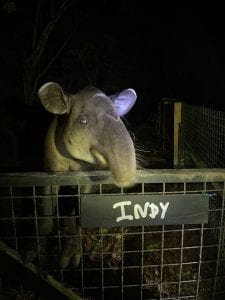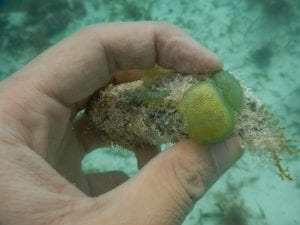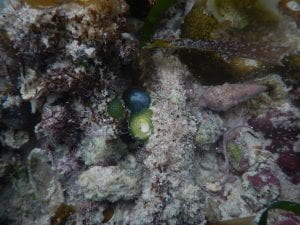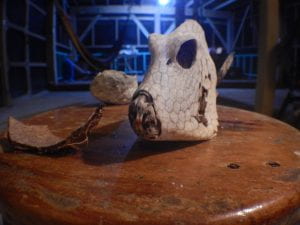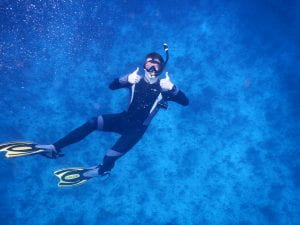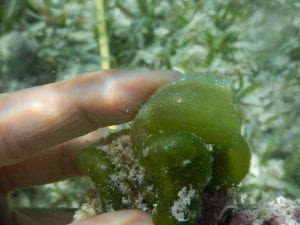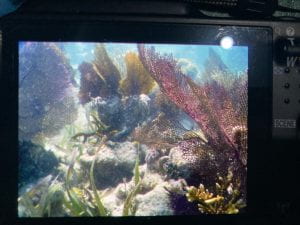One of the things that ties the rainforest and coral reefs together are the physical materials they are built upon. Not only is the reef framework, the sand of the reef, and the limestone underlying the rainforest soil all based in calcium carbonate, but the calcium carbonate all originated in the same way, from calcifying marine organisms who either laid it down as reef builders or built it into their tissues before they died. This leads me to another similarity between reefs and rainforest, they are both shaped by the power of erosion. The Chiquibul rainforest is shaped by rainwater slowly chipping away at the limestone, etching out caves and a dynamic landscape. Similarly, reef eroders on the coral reef like urchins and parrotfish burrow or eat away at the the coral framework causing diverse and dynamic nooks and topographic characteristics that provide the environment for a variety of organisms and ecological niches (contributing to its incredible biodiversity). This dynamic topography created by both reef-framework building organisms like corals and reef eroding forces like waves and urchins is similar to the topographic diversity of Rainforests. Competition for sunlight, and specialization in different quantities of sunlight, leads to many layers of the rainforest, with tall canopy trees, epiphytes clinging to their sides, and shade tolerant plants competing for space below. This similarly is a causes of the great biodiversity and abundance of ecological niches of the rainforest. In both rainforest and reef, this was also something that was readily apparent for me to observe myself, and the dynamic topographies stood out very starkly compared to other ecosystems I have seen. In addition to space, there is another scarce resource in both reefs and rainforests that leads to biodiversity, competition for nutrients. Both coral reefs and rainforests are very nutrient poor, and this competition for nutrients leads to specialization in specific ecological niches contributing to diversity. In rainforests this is because the limestone underneath the soil causes nutrients to wash or leach out of the soil very quickly making plants compete to take them up and keep them. Especially when there is deforestation however, the nutrients might wash out all the way to the reefs on the ocean. This is unhealthy for the reefs which are also used to being in a very low nutrient environment. The nutrients could cause mass algae growth, and as algae competes with corals, this could lead to coral decline.
Overall, the course definitely exceeded my expectations. I was pleasantly surprised by the number of amazing wild organisms we got to just run into. Whether it was, snakes, toads, or barracuda, I didn’t expect to be as mind blown as I was to see all these real life wild animals! Something else that was a pleasant surprise was that snorkeling in the ocean and trekking through the rainforest was not as hard as I thought it would be. The ocean water was much warmer and (generally) calmer than any I had experienced before, and the fins helped make me really buoyant and easy to float. As for the forest, the canopy shades the forest floor so much that its actually not that overgrown, and with the help of Dr. Solomon’s machete we found it reasonable to walk through!
One of my favorite just being out on the rainforest trails. It’s really hard to describe, buts its like going to see the Eiffel Tower for the first time or a natural wonder like the grand canyon. It’s just like “Wow, this is real… I am in it.” It was really immersive and cool.
One of my least favorite parts of the trip was the bug bites. Need I say more? I don’t think so. If you went on the trip you know. If you didn’t go on the trip… well… enjoy looking down at your legs and not seeing polkadot scars.
One thing I am going to remember about this trip was what I learned about marine debris, having to do a presentation on them made me learn about plastic production and pollution, micro plastic, marine life entanglement in fishing nets, and so much more. Having seen and dealt with soo much plastic at glover’s reef really solidified the lessons I had learned about the scale and impact of our ocean plastic problem.
I am also going to remember the lessons and research regarding Scarlet Macaws that Boris Aravelo spoke to us about. Not only was it fascinating and inspirational to learn about his efforts to save the Macaws, but it was also super cool to hear about the pressures facing scientists to appease politicians, the dangers of protecting their own work over conservation, learning how to communicate with leaders and the public, etc.
Finally, something that made a lasting impression on me was the plight of coral reefs today. What we learned about hard coral diseases, global warming, and loss of key species like Diadema urchins that stop algae overgrowth impressed on me just how gravely in danger coral reefs are, and just how much we have already lost. I am also glad that I will have a memory of their majesty and preciousness while I had the chance.